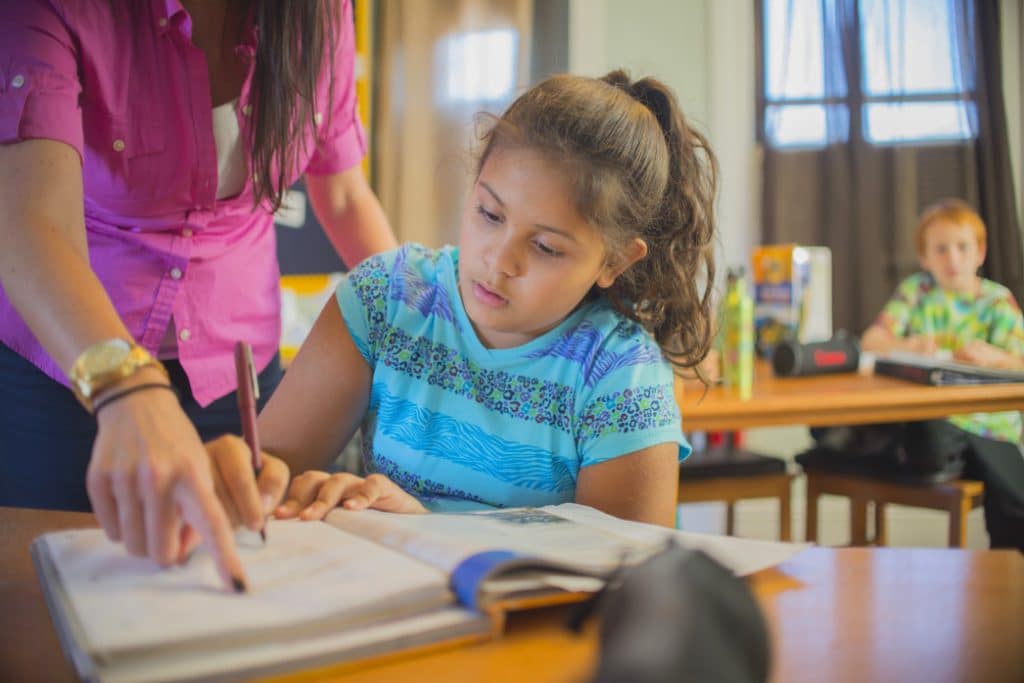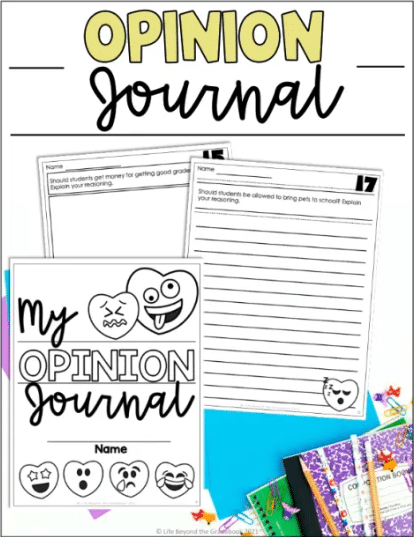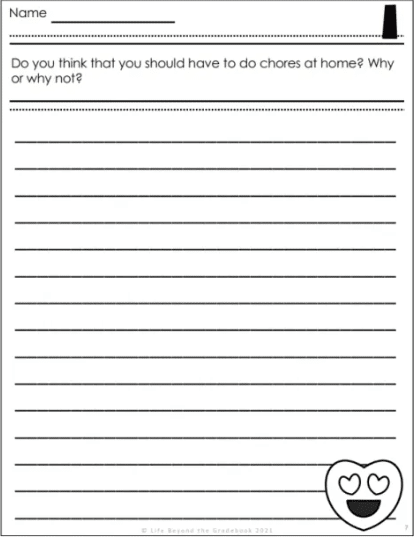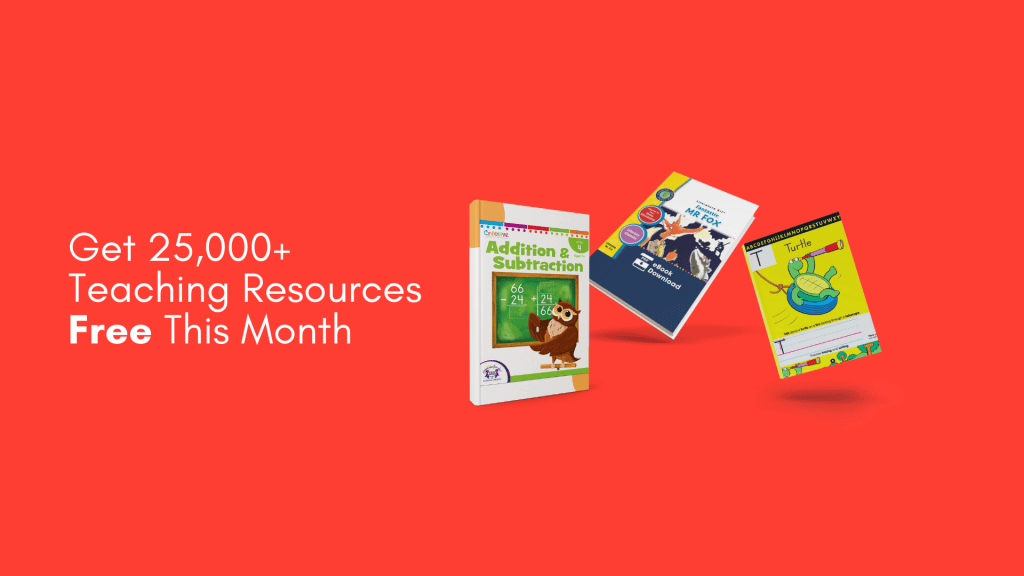Of all the challenges that teachers face in their classrooms, keeping kids engaged in their own learning is consistently cited as one of the toughest. A recent survey conducted by the Gotham Group (Voices From the Classroom, 2021) found more than half of teachers reported significant decreases in-class participation, homework and assignment completion, and student attendance for the entire year. That’s the bad news. The good news is that simple interventions, such as bell work activities can increase engagement for students and teachers alike.

Table of Contents
- What Is Bell Work?
- Bell Work Tips:
- 30 Bell Work Ideas You Can Try:
- Bell Ringer Teaching Resources:
- FAQ’s About Bell Ringers:
What Is Bell Work?
Bellwork, frequently known as bell ringers, encompasses a set of concise, targeted tasks created for students to complete autonomously as the class bell signals the beginning of the session. These assignments are deliberately constructed to need little guidance from the teacher, thereby promoting a sense of self-sufficiency and accountability among the students as they progress through the material.
Bellwork assignments serve as invaluable educational resources, as they not only introduce novel ideas or fortify previously acquired knowledge but also foster a favorable learning atmosphere that nurtures excellent study habits and discipline.
One of the primary merits of implementing bellwork assignments lies in establishing an organized and engaging learning experience. Starting each session with a specific task conditions students to enter the classroom with a mindset focused on learning and efficiency. This practice helps minimize interruptions and off-topic behavior, consequently creating a more suitable environment for learning.
Bellwork tasks are adaptable and can be tailored to various subjects and skill levels. They can be employed to revisit prior knowledge, present new topics, or even provoke critical thinking and problem-solving abilities. By incorporating diverse question styles and formats, instructors can guarantee that bell work activities remain captivating and pertinent to how students complete the day’s lesson goals.
Moreover, well-considered bell work tasks can aid in cultivating proper study habits among students. As they regularly engage in these brief, self-directed assignments, these students learn to progressively refine their time management, problem-solving, and self-motivation skills – all crucial for academic achievement.
Another pragmatic advantage of bell work assignments is that they provide teachers with valuable time to manage administrative tasks, such as recording attendance or addressing individual student concerns, without squandering vital instructional time. By keeping students meaningfully engaged with bell work, teachers can ensure that no time is wasted at the start of class, maximizing the utilization of every instructional moment.
In summary, bell work, or bell ringers, function as an incredibly effective educational method that supports student autonomy, cultivates a positive learning environment, fosters excellent study habits, and allows teachers to effectively manage their time. By integrating well-crafted bellwork assignments into their lesson plans, educators can generate a more engaging, efficient, and successful classroom experience for their students.

Bell Work Tips:
Bell Work As Classroom Procedures
Having a bellwork activity ready for the kids the first time they enter the classroom is an excellent way to introduce yourself as a teacher, and your class as a place of engagement and learning. Activities for the first several days can focus on get-to-know-you exercises and teaching students classroom procedures, rather than getting into the subject material. In addition to helping teachers get to know new students, these beginning-of-year bell ringers can also serve as informal assessments, while easing kids back into the school year learning mindset.

How To Make Bell Work Easier
Bell ringers call for thorough planning and preparation from the teacher. To allow students to work effectively on their own, activities should be designed to be easily understood and self-contained. It is crucial to make sure that all required materials are conveniently available for the students to use.
One way to manage supplies is by keeping them in a central location within the classroom. However, a more practical alternative is to place the materials directly at each student’s desk. This approach prevents congestion of students leaving their seats at the same time to gather items and allows them to start working right away.
Another method for handling bell work materials is to have students store everything they need in a specific folder or notebook. They can collect this folder or notebook upon entering the classroom and return it to an assigned storage spot when leaving. This not only helps maintain organization but also creates a routine for the amount students work, emphasizing the significance of bell work activities.
The presentation of the assignment itself can be executed in a variety of ways. Some choices include distributing printed copies, writing the task on a chalkboard or whiteboard, or projecting it onto a screen for all students to see using a Smartboard or conventional overhead projector. No matter which method is selected, it is essential that the instructions are concise, unambiguous, and easily comprehensible, allowing students to commence their work independently without any confusion or delays.
Besides optimizing the procedure, it is vital to ensure that bell work activities are engaging and relevant to the day’s lesson or the overall course content. Incorporating diverse question formats, such as multiple-choice, short answer, or problem-solving, can help maintain students’ interest and motivation. Additionally, integrating real-world examples or connecting the activities to the students’ personal experiences can make the tasks more significant and relatable.
By optimizing morning work, and improving the bell work procedure, educators can not only make the activities more manageable for themselves but also create a more encouraging and efficient learning environment for their students. This, in turn, can lead to enhanced academic performance, superior time management, and the cultivation of solid study habits.

30 Bell Work Ideas You Can Try:
General Bell Work Ideas

- Journaling
Journal work isn’t just for English! A simple journal topic related to the subject matter encourages students to relate the material to their own experiences. Simply assign a prompt and set a timer. You can find a variety of easy-to-use journal resources here.



- Logic Problems, word Searches, or other games
Create your own word searches or games using simple online templates, or browse sites like Teach Simple to find ready-made materials for the busiest days. - Quick Lists
Give students a topic with instructions to list as many related concepts, facts or questions as they can. For an added challenge, have them use the alphabet for the first letter of their responses. - Response to a Current Event
Have students craft a response to an op-ed or article on a current event. The exact prompt can be tailored to course material, or allow students a more free-from response option. - Create-A-Game
Ask students to formulate review questions for silent reading, lesson, or unit. Each student can create their own questions and answers, which can later be used to create flashcards or a group review game.
Elementary Bell Work

- Students Write a Ten-Word Story
Ask emerging writers to write and/or illustrate a ten-word story based on a prompt. - Manipulative Work
This one is a great choice for Pre-K and lower primary grades. Set out fine-motor activities such as sorting, lacing, or stacking activities. Be sure that the manipulatives can be easily contained on student desks. - Ask-A-Teacher
Students may write to the teacher to ask a question about anything related to the class. This can be expanded to include any question at all and provides a wonderful opportunity to get to know the quieter kids. Questions can be answered anonymously later or worked into future lessons. - Handwriting Work
Handwriting worksheets or lists of words to copy are great bell ringers for younger primary students. Older students may work on learning cursive script. - Free Reading
Kids of all ages and reading (and pre-reading) levels benefit from dedicated time to read.
Bell Work For Language Arts

- Reading Response
Ask students to journal or to respond to specific questions related to assigned reading. - Flashcards
Flashcards Give students a list of questions or terms related to the current reading assignment or textbook chapter. Ask them to create flashcards for review. - Graphic Organizer
Create a graphic organizer for students to fill in to help them organize, review, and clarify recently-presented subject matter. - Correct the Mistakes
Present students with a passage, and allow them to correct all of the teacher’s writing prompts mistakes. - Debate Minute
Provide students with a statement of opinion or article that discusses both sides of an issue. Assign them time to write an informal argument, stating their opinion on the issue.
Bell Work For Math
- Speed Drills
Present students with a worksheet full of problems and have them race to see how many they can answer correctly in a given time period. - Math Manipulatives
Have students practice use math manipulatives, such as math cubes, magnetic numbers, or shape matching to solve problems or re-create shapes. - Word Problem Creation
Instruct students to write a given number of math word problems based upon a short story. Students may also trade their problems with other students and solve them. - Math Puzzles
Students can work on math-related puzzles such as logic squares or sudoku. These types of activities are great for decreasing math anxiety. - Create A Question
Give students a list of answers, which can be numbers or word solutions. Ask them to create their own math problems that fit the given solutions.
Bell Work For Sciences
- Mystery Photos
Present students with close-up photos of course-related objects and ask them to identify them. For example, geological or fossil specimens, anatomical features, or plant parts. - Create An Experiment
Provide students with a prompt and ask them to design an experiment they could use to answer the question. Students can explain what materials and processes they would use. - Vocabulary Review
Challenge students to write a short passage that incorporates as many words as possible from a list of scientific terms. - Science Graphic Organizer
Provide a graphic organizer that students fill out and use to review current lessons. - Word Scrambles
Create and project a word scramble list of new science vocabulary words. Challenge the students to find and unscramble as many words as possible in the allotted time, with bonus points for using the words in a sentence.
Bell Work For Social Studies

- Current Events Response
Provide students with a current events article or video and ask them for a general or targeted response to the material. - Analyzing Historical Material
Students can offer commentaries on political cartoons or primary historical courses, or answer assigned questions. - Interview with History
Assign students a historical figure and ask them to provide a list of interview questions for that person. They should be related to the current material and may be integrated into later bell activities. - Geography Activities IRL
Provide students with creative ways to review geography, such as trying to list all the countries on a given continent, or listing facts about a given geographical area. - Geography Online
Instruct students to a digital fill-in map to label geographic areas. Encourage them to correctly fill in as much of the map as possible in the allotted class time.
Bell Ringer Teaching Resources:
Even the brightest teachers fall into creative slumps. Thankfully, there is an abundance of ready-to-use bell work resources available online.
Teach Simple offers a variety of editable or ready-made bell ringer worksheets, ideas, organizers, and books that teachers may be particularly interested in. It’s free to join and you can view our most popular products here.

The Efficient Classroom website offers valuable articles about the science behind bell ringers and learning, as well as free samples of its bell work activities packages.
In addition to educator-created resources, many news, scientific, and cultural organizations offer a variety of free resources that teachers can use for bell ringers. C-SPAN Classroom, for example, has a robust bell work activities page that offers links to various media and accompanying lessons. A few other websites that offer similar resources include:
FAQ’s About Bell Ringers:
Bell work engages students in the learning process from the moment they enter the classroom. In addition to reinforcing learning, they can also encourage student independence, ease class transitions, and create positive classroom routines that improve management.
Bell work activities should be short and simple. Students should be able to come in, sit down, and begin the assignment independently.
Because of the volume of work created with daily bell assignments, it may be impractical to grade for correctness. In the interest of encouraging students and rewarding engagement, a participation grade may be appropriate.
Bell ringer activities are a great addition to any teacher’s classroom management and engagement toolbox. These activities provide students and teachers with a familiar routine, which eases the beginning of class period transitions while boosting student confidence and independence. The internet offers a wealth of resources for time-strapped teachers looking to add creative bell activities to daily classwork.
